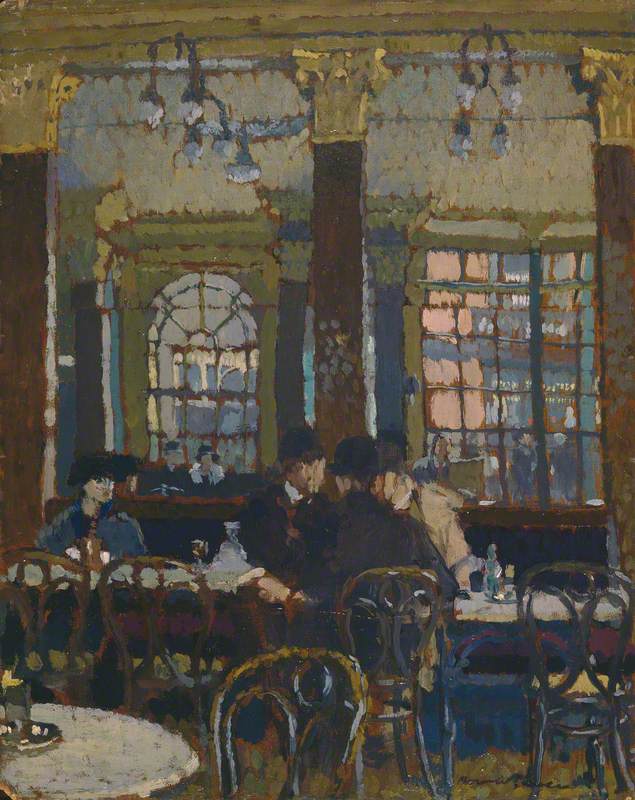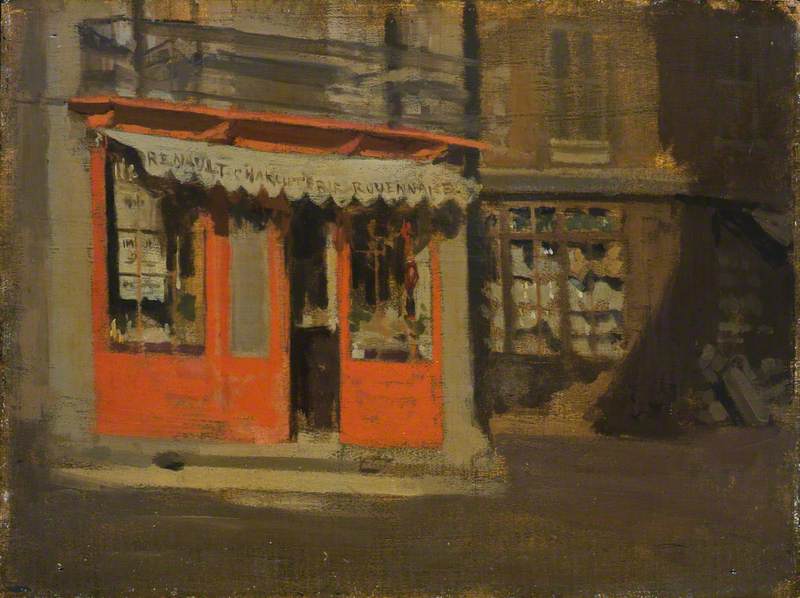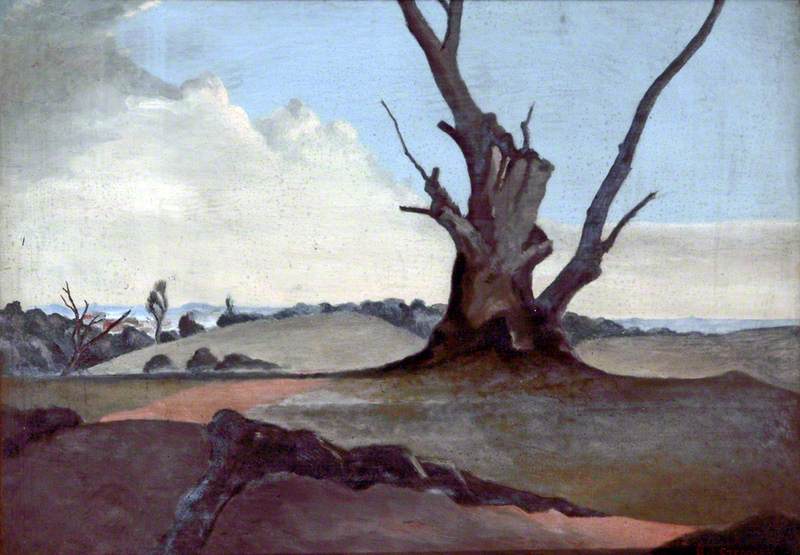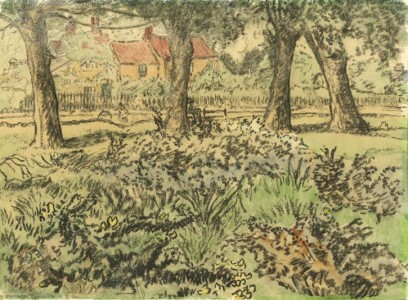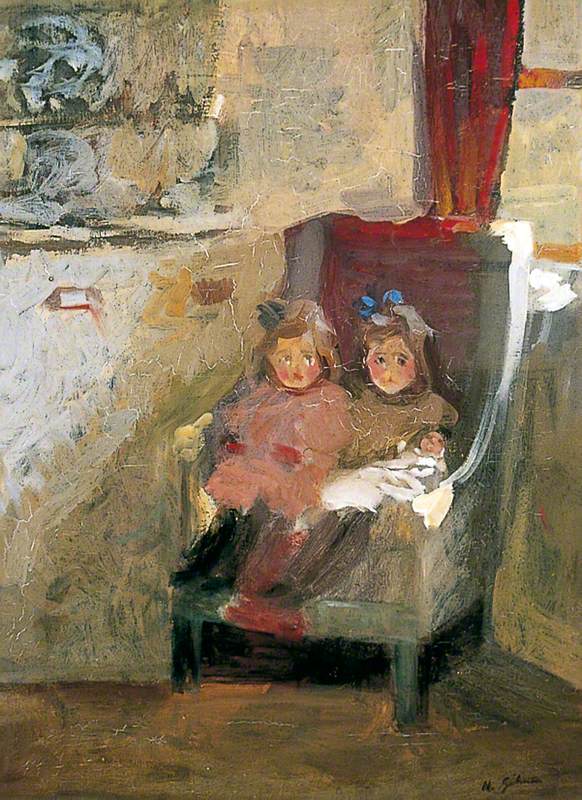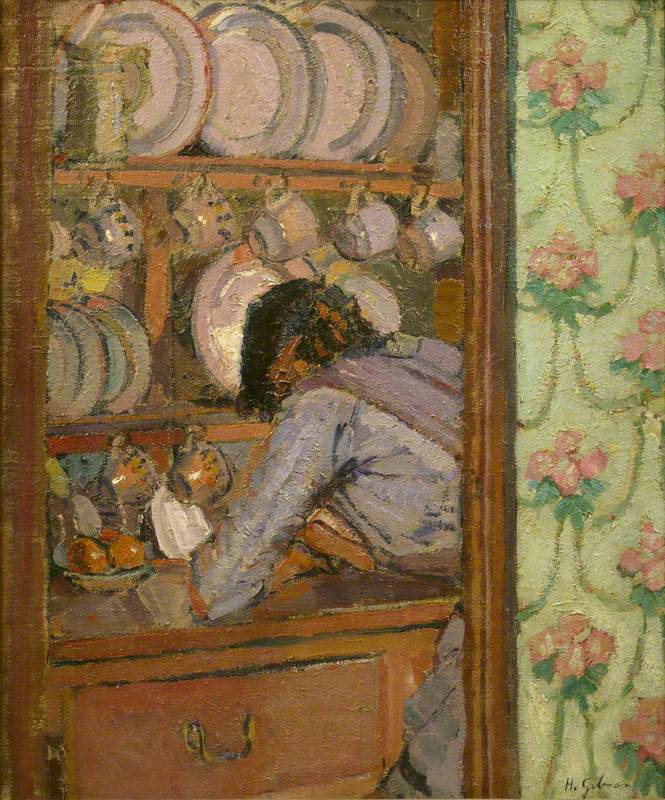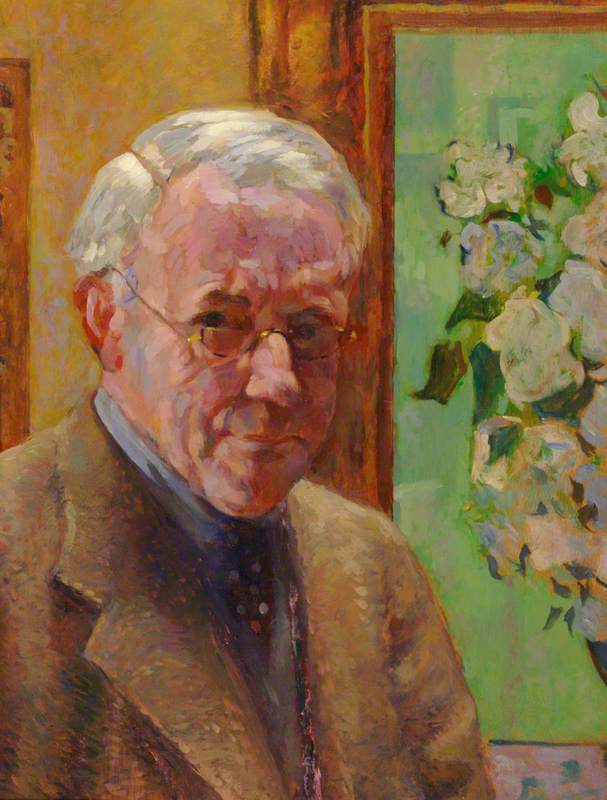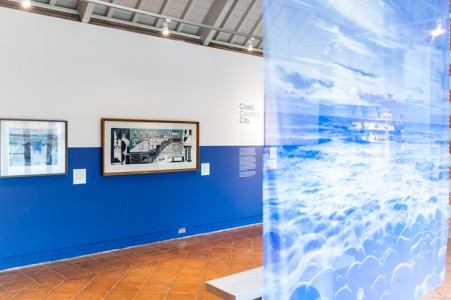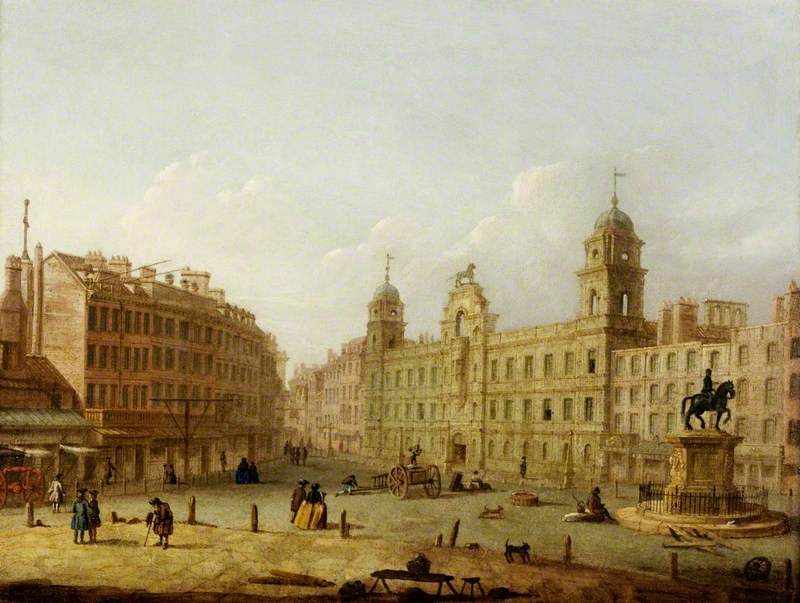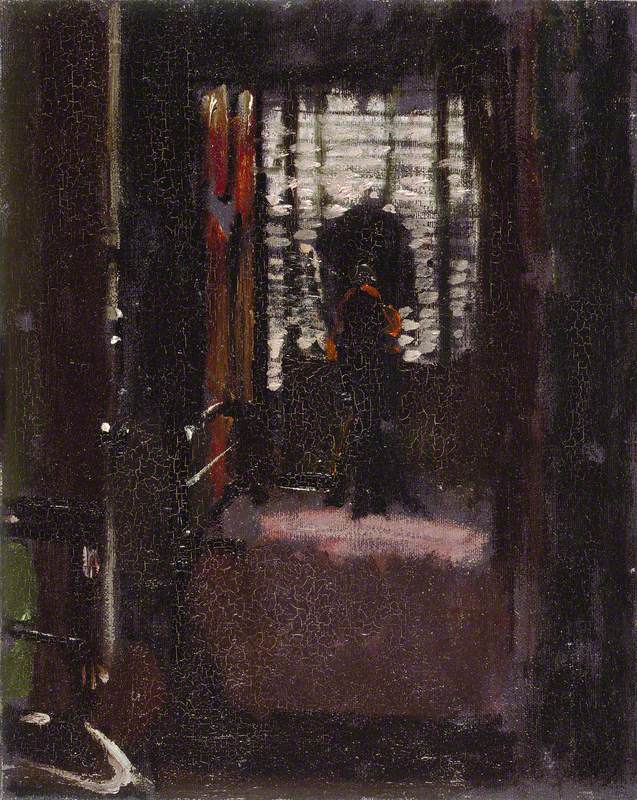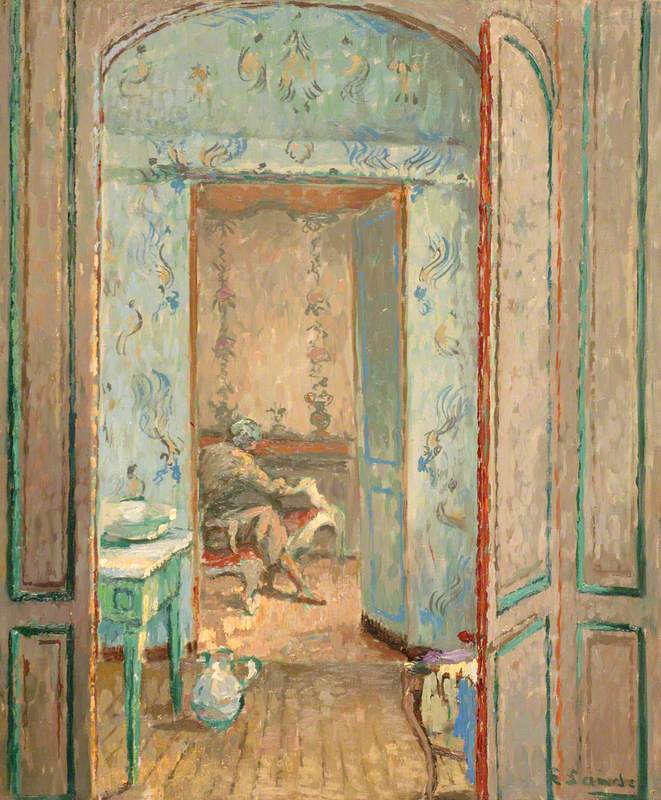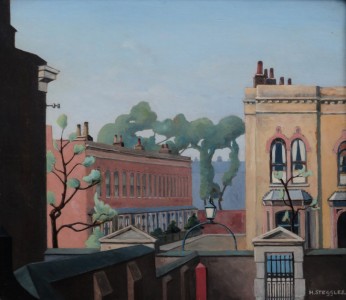With this painting, the artist Malcolm Drummond recorded a key episode in modern British art. Gathered in the Fitzroy Street studio, London, are members of the Camden Town Group, which in three exhibitions in 1911 and 1912 promoted a new realism, reacting against the type of pictorial fantasy often found at such venues as the Royal Academy. Their mentor was Walter Sickert and they originally met informally in his nearby studio, at 8 Fitzroy Street, before moving to number 19.
19, Fitzroy Street (Walter Richard Sickert's studio)
1912–1914
Malcolm Drummond (1880–1945) 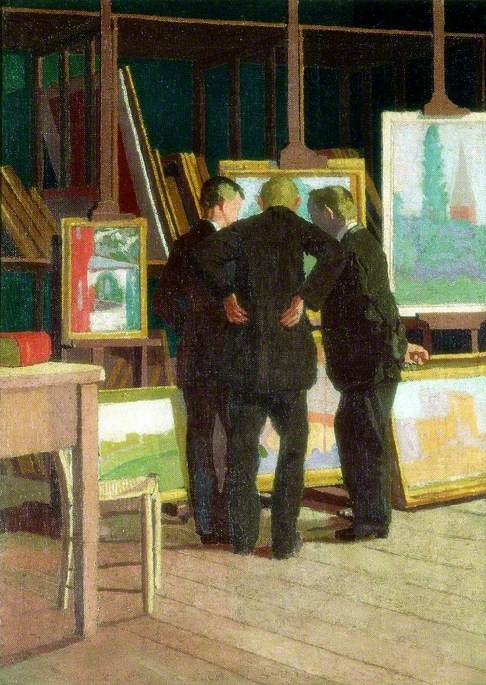
Sixteen artists showed with the Camden Town Group at the Carfax Gallery. They were not all urban realists, but Sickert, Drummond, Robert Bevan, Harold Gilman, Charles Ginner and Spencer Gore all painted pictures which have an unmistakable Camden Town flavour. It is not certain who the three men are in Drummond’s painting. He may be one of them, although it has been suggested that they are, left to right, Gore, Ginner and Frank Rutter, an exhibition organiser and critic sympathetic to their aims.
Drummond was born in 1880. He graduated in history from Oxford University in 1903, studied at the Slade School from 1903 to 1907, then attended Sickert’s class at Westminster School of Art from 1908 to 1910, as well as private ones run by him, including etching. Drummond etched a version of 19, Fitzroy Street. From 1925 to 1931 he taught at Westminster School of Art, then retired to Berkshire to paint, latterly going blind. He died in 1945 not having had a solo exhibition. Drummond and Sickert were lifelong friends, sharing a sense of humour and love of the music-hall. One can learn more about Drummond and his work from The Camden Town Group in Context, a research project published online, the result of many years of research into Tate’s collection of artworks by members of the Group.
Although the half-century after the Carfax Gallery exhibitions witnessed unprecedented experimentation by British artists, there were those who remained wedded to the type of urban realism promoted by the Camden Town Group. Some found their home in the London Group that emerged from it, of which Drummond was a founder-member. Gilman and Ginner showed at the Goupil Gallery as Neo-Realists in 1914 and, with Bevan, exhibited there in 1915 as the Cumberland Market Group. Between the wars, as other painters investigated aspects of Cubism, Surrealism and abstraction, urban realism was perhaps most strongly – if not exclusively – espoused by the East London Group that stemmed from evening classes run by the Slade-trained artist John Cooper in Bow. Group artists enjoyed successful and critically acclaimed exhibitions at the Whitechapel Art Gallery, Tate, at a leading West End gallery and in the provinces during the late 1920s and 1930s. After years of critical neglect, the Group is emerging from the shadows with the publication by Francis Boutle Publishers of its history, From Bow to Biennale: Artists of the East London Group.
David Buckman, art historian
